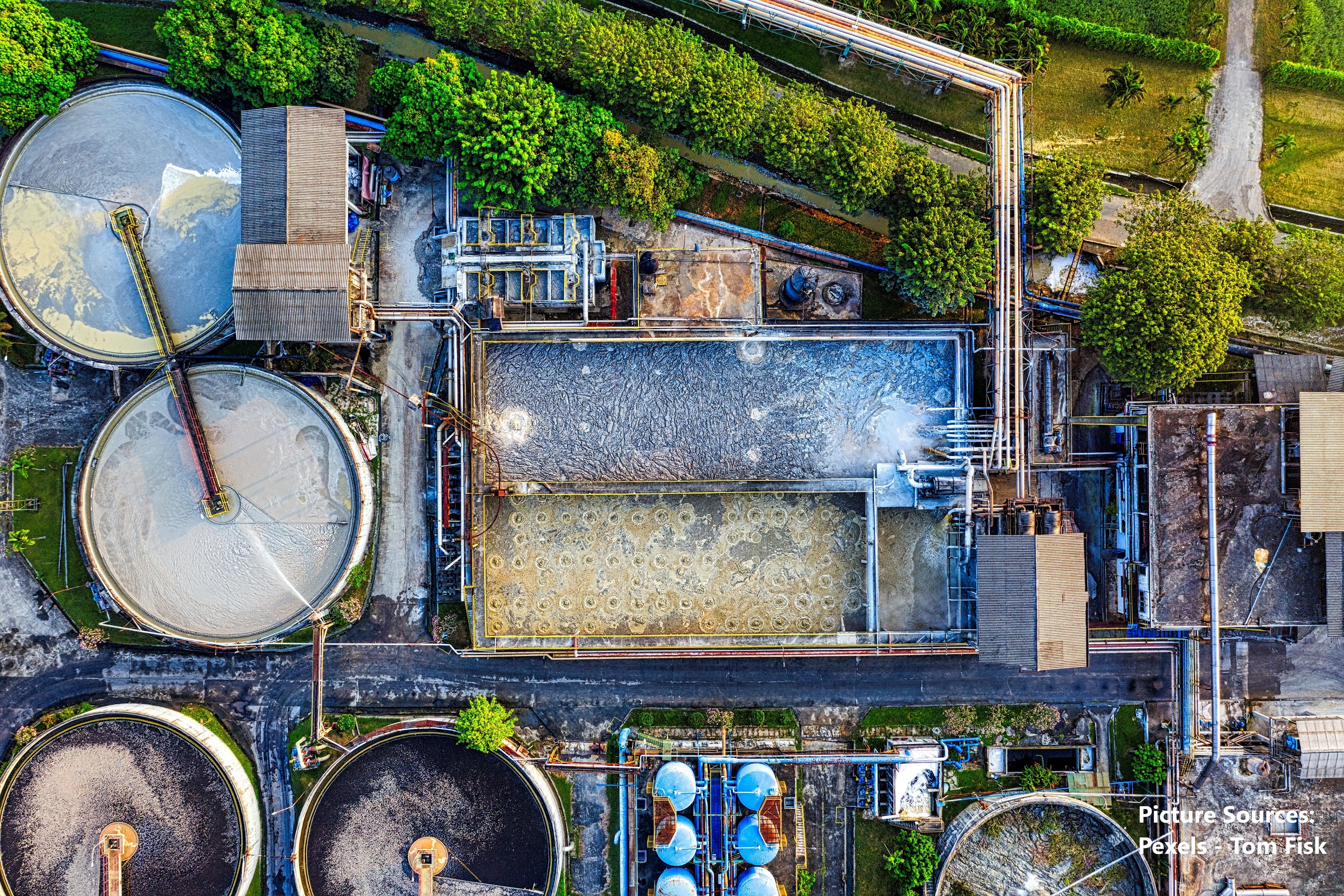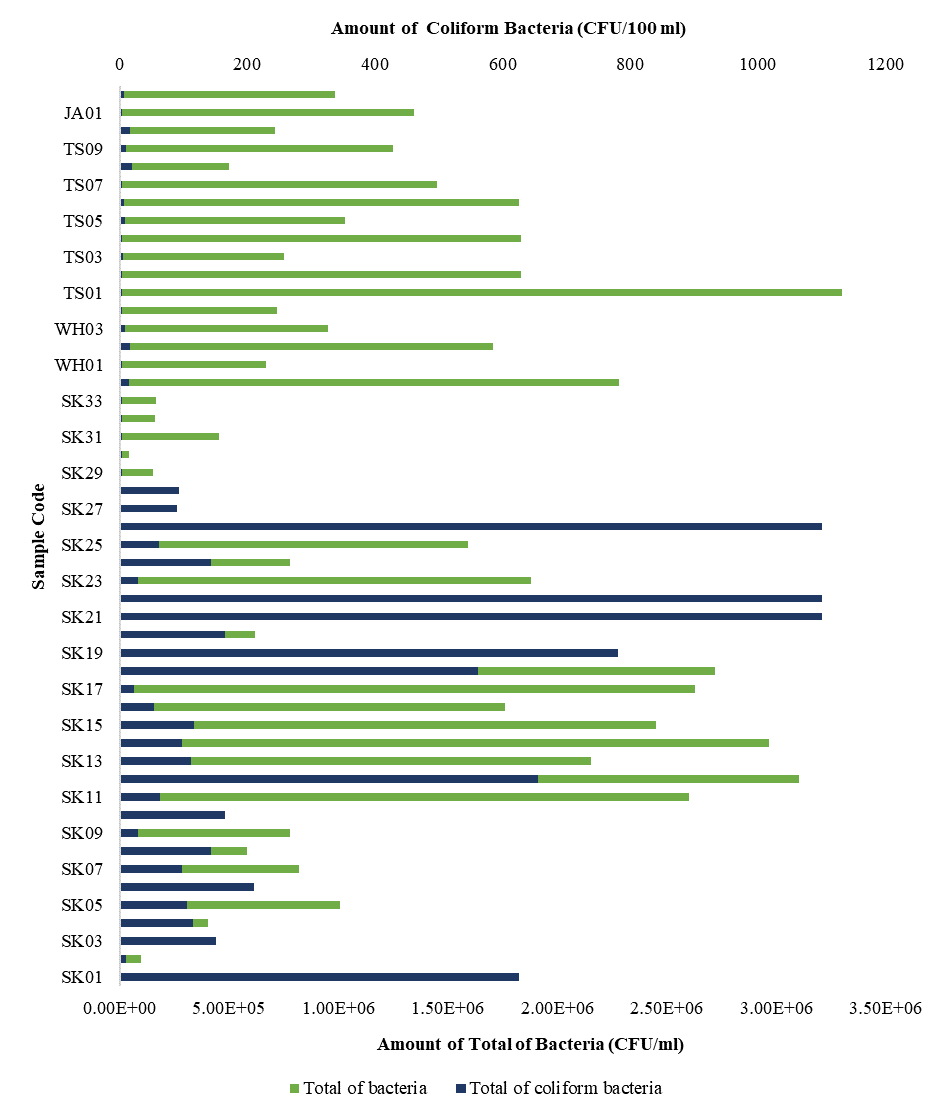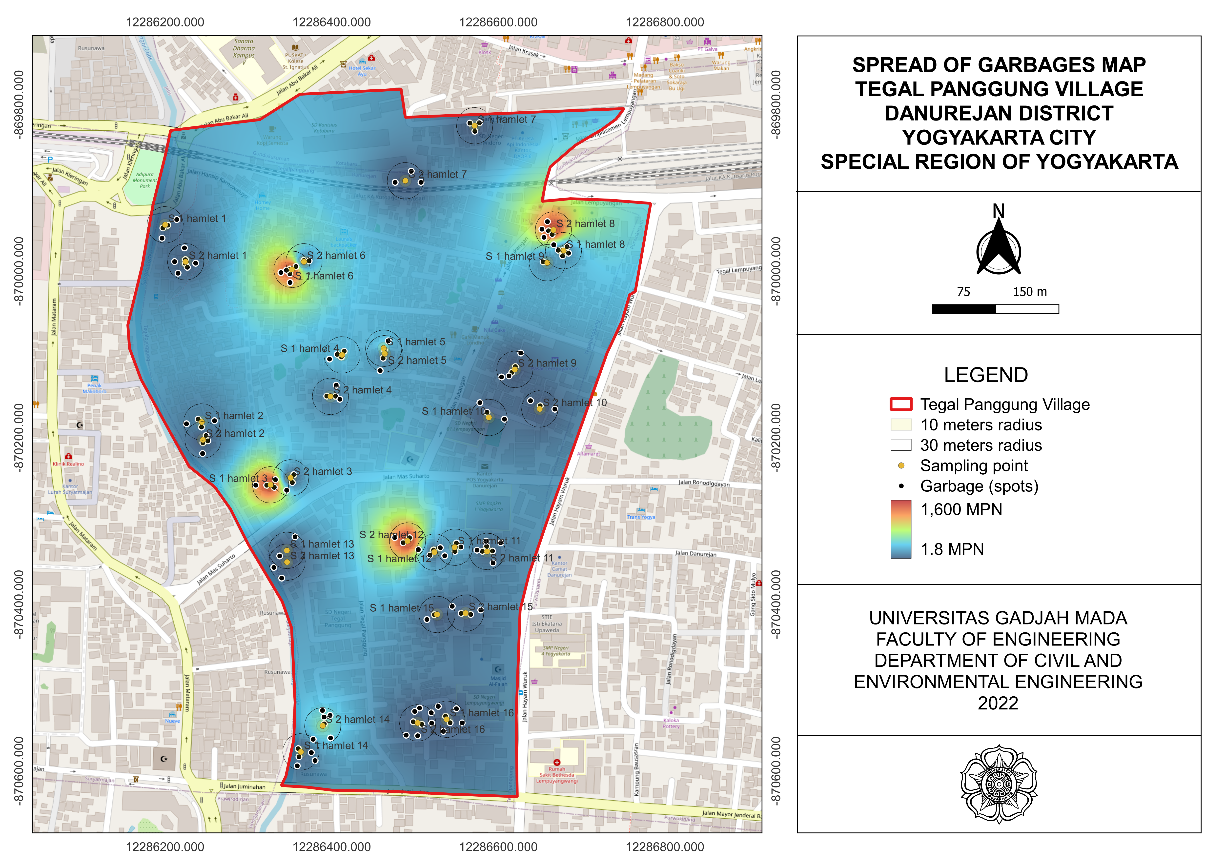Potential Sequencing Batch Reactor in Leachate Treatment for Organic and Nitrogen Removal Efficiency

Introduction: Landfill wastewater or leachate has unique characteristics. Several conventional methods need a few treatment tanks to cover the treatment process. A Sequencing Batch Reactor (SBR) is a biological treatment method that uses a single tank with few-cycle phases. This study aims to determine the potential of a Sequencing Batch Reactor (SBR) that can be used to treat landfill leachate. Methods: A Sequencing Batch Reactor (SBR) was used in this study. The characteristics of leachate served as the basis for the design of the SBR reactor. The synthetic leachate was used to create the reactor feed based on the actual landfill leachate compositions. The reactor's influent and effluent were analyzed based on a few parameter changes, such as Suspended Solid (SS), Chemical Oxygen Demand (COD), ammonia nitrogen (NH3-N), and Total Kjeldahl Nitrogen (TKN). Results and Discussion: While the experiment was running, 84% of SS were removed, 88% of COD were removed, a -28% efficiency rate for NH3-N removal, and a -172% efficiency rate for TKN removal. After the withdrawal phase, the supernatant showed promising results with 99% COD removal, 97% SS removal, and 65% TKN removal. Unfortunately, the removal of NH3-N reaches -130%. It indicates insufficient concentrations of MLSS and SRT, as well as the presence of a eutrophication process. Conclusion: SBR shows a promising result for leachate treatment. Few changes in the cycling process were needed for further study, so the treatment process becomes optimal to reach its full potential.
Adriansyah E, Agustina TE, Arita S. Leachate Treatment of TPA Talang Gulo, Jambi City by Fenton Method and Adsorption. Indonesian Journal Fundamental and Applied Chemistry. 2019;4(1):20–24. https://doi.org/10.24845/ijfac.v4.i1.20
Sudibyo H, Shabrina ZL, Wondah HR, Hastuti RT, Halim L, Purnomo CW, Budhijanto W. Anaerobic Digestion of Landfill Leachate With Natural Zeolite and Sugarcane Bagasse Fly Ash as the Microbial Immobilization Media in Packed Bed Reactor. Acta Polytechnica. 2018;58(1):57–68. https://doi.org/10.14311/AP.2018.58.0057
Ma S, Zhou C, Pan J, Yang G, Sun C, Liu Y, Chen X, Zhao Z. Leachate From Municipal Solid Waste Landfills in a Global Perspective: Characteristics, Influential Factors and Environmental Risks. Journal of Cleaner Production. 2022;333(9):130234. https://doi.org/10.1016/j.jclepro.2021.130234
Ha M, Jeong HY, Lim ST, Chung HJ. The Cooking Method Features Controlling Eating Quality of Cooked Rice: An Explanation from the View of Starch Structure in Leachate and Morphological Characteristics. Food Research International. 2022;162(A):111980. https://doi.org/10.1016/j.foodres.2022.111980
Zhang Q, Guo M, Xie J, Yang X, Chen C. Investigation on Characteristics of Landfill Leachate and Feasibility Study of Low-Temperature Vacuum Evaporation Treatment. Journal of Environmental Chemichal Engineering. 2022;10(5):108451. https://doi.org/10.1016/j.jece.2022.108451
Huang X, Mi W, Ito H, Kawagoshi Y. Probing the Dynamics of Three Freshwater Anammox Genera at Different Salinity Levels in a Partial Nitritation and Anammox Sequencing Batch Reactor Treating Landfill Leachate. Bioresource Technology. 2021;319(8):124112. https://doi.org/10.1016/j.biortech.2020.124112
Li X, Wang X, Chen L, Huang X, Pan F, Liu L, Dong B, Liu H, Li H, Dai X, Hur J. Changes In Physicochemical and Leachate Characteristics of Microplastics During Hydrothermal Treatment of Sewage Sludge. Water Research. 2022;222(7):118876. https://doi.org/10.1016/j.watres.2022.118876
Podlasek A, Vaverková MD, Koda E, Jakimiuk A, Martínez Barroso P. Characteristics and Pollution Potential of Leachate from Municipal Solid Waste Landfills: Practical Examples from Poland and the Czech Republic and a Comprehensive Evaluation in a Global Context. Journal of Environmental Management. 2023;332(11):117328. https://doi.org/10.1016/j.jenvman.2023.117328
Mohammad A, Singh DN, Podlasek A, Osinski P, Koda E. Leachate Characteristics: Potential Indicators for Monitoring Various Phases of Municipal Solid Waste Decomposition in A Bioreactor Landfill. Journal of Environmental Management. 2022;309(10):114683. https://doi.org/10.1016/j.jenvman.2022.114683
Dhamsaniya M, Sojitra D, Modi H, Shabiimam MA, Kandya A. A Review of the Techniques for Treating the Landfill Leachate. Material Today: Proceedings. 2023;77(1):358-364. https://doi.org/10.1016/j.matpr.2022.11.496
Ilmasari D, Kamyab H, Yuzir A, Riyadi FA, Khademi T, Al-Qaim FF, Kirpichnikova I, Krishnan S. A Review of the Biological Treatment of Leachate: Available Technologies and Future Requirements for the Circular Economy Implementation. Biochemical Engineering Journal. 2022;187(4):108605. https://doi.org/10.1016/j.bej.2022.108605
Tałałaj IA, Bartkowska I, Biedka P. Treatment of Young and Stabilized Landfill Leachate by Integrated Sequencing Batch Reactor (SBR) and Reverse Osmosis (RO) Process. Environmental Nanotechnology, Monitoring and Management. 2021;16(1):100502. https://doi.org/10.1016/j.enmm.2021.100502
Jatmoko M, Adinda AR, Siregar FH, Dalimunthe RC, Sari MM, Suryawan IWK. Perencanaan Proses Pengolahan Lindi di TPA Nusa Lembongan dengan Menggunakan Kolam Stabilisasi. Jurnal Teknik Pengairan. 2021;12(2):165–173. https://doi.org/10.21776/ub.pengairan.2021.012.02.08
Díaz AI, Laca A, Díaz M. Approach to a Fungal Treatment of a Biologically Treated Landfill Leachate. Journal of Environmental Management. 2022;322(5):116085. https://doi.org/10.1016/j.jenvman.2022.116085
Spiniello I, De Carluccio M, Castiglione S, Amineva E, Kostryukova N, Cicatelli A, Rizzo L, Guarino F. Landfill Leachate Treatment by a Combination of a Multiple Plant Hybrid Constructed Wetland System with a Solar Photofenton Process in a Raceway Pond Reactor. Journal of Environmental Management. 2023;331(1):117211. https://doi.org/10.1016/j.jenvman.2022.117211.
Yang C, Jin X, Guo K, Diao Y, Jin P. Simultaneous Removal of Organics and Ammonia Using a Novel Composite Magnetic Anode in the Electro-Hybrid Ozonation-Coagulation (E-HOC) Process Toward Leachate Treatment. Journal of Hazardous Materials. 2022;439(13):129664. https://doi.org/10.1016/j.jhazmat.2022.129664
Pu L, Xia Q, Wang Y, Bu Y, Zhang Q, Gao G. Tailored Nanofiltration Membranes with Enhanced Permeability and Antifouling Performance Towards Leachate Treatment. Journal of Membrane Science. 2022;658(6):120730. https://doi.org/10.1016/j.memsci.2022.120730
Lindamulla LML, Jayawardene NKR, Wijerathne WSM, Othman M, Nanayakkara KGN, Jinadasa KBSN, et al. Treatment of Mature Landfill Leachate in Tropical Climate using Membrane Bioreactors with Different Configurations. Chemosphere. 2022;307(P3):136013. https://doi.org/10.1016/j.chemosphere.2022.136013
Bai F, Tian H, Wang C, Ma J. Treatment of Nanofiltration Concentrate of Landfill Leachate Using Advanced Oxidation Processes Incorporated with Bioaugmentation. Environmental Pollution. 2023;318(1):120827. https://doi.org/10.1016/j.envpol.2022.120827
He H, Zhang C, Yang X, Huang B, Zhe J, Lai C, Liao Z, Pan X. The Efficient Treatment of Mature Landfill Leachate using Tower Bipolar Electrode Flocculation-Oxidation Combined with Electrochemical Biofilm Reactors. Water Research. 2023;230(1):119544. https://doi.org/10.1016/j.watres.2022.119544
Agustina TE, Teguh D, Wijaya Y, Mermaliandi F, Bustomi A, Manalaoon J, Theodora G, Rebecca T. Study of Synthetic Dye Removal using Fenton/Tio2, Fenton/UV, and Fenton/TiO2/UV Methods and the Application to Jumputan Fabric Wastewater. Acta Polytechnica. 2019;59(6):527–535. https://doi.org/10.14311/AP.2019.59.0527
Singh A, Srivastava A, Saidulu D, Gupta AK. Advancements of Sequencing Batch Reactor for Industrial Wastewater Treatment: Major Focus on Modifications, Critical Operational Parameters, and Future Perspectives. Journal of Environmental Management. 2022;317(2):115305.https://doi.org/10.1016/j.jenvman.2022.115305
Dan NH, Le Luu T. High Organic Removal of Landfill Leachate using a Continuous Flow Sequencing Batch Biofilm Reactor (CF-SBBR) with Different Biocarriers. Science of the Total Environment. 2021;787:147680. https://doi.org/10.1016/j.scitotenv.2021.147680
Sarvajith M, Nancharaiah Y V. Concurrent Tellurite Reduction, Biogenesis of Elemental Tellurium Nanostructures and Biological Nutrient Removal in Aerobic Granular Sludge Sequencing Batch Reactor. Journal of Environmental Chemical Engineering. 2022;10(6):108511. https://doi.org/10.1016/j.jece.2022.108511
Sánchez Valencia AI, Rojas Zamora U, Meraz Rodríguez M, Álvarez Ramírez J, Salazar Peláez ML, Fajardo Ortiz C. Effect of C/N Ratio on the PHA Accumulation Capability of Microbial Mixed Culture Fed with Leachates from the Organic Fraction of Municipal Solid Waste (OFMSW). Journal of Water Process Engineering. 2021;40(3):101975. https://doi.org/10.1016/j.jwpe.2021.101975
Wei Y, Ye Y, Ji M, Peng S, Qin F, Guo W, Ngo HH. Microbial Analysis for the Ammonium Removal from Landfill Leachate in an Aerobic Granular Sludge Sequencing Batch Reactor. Bioresource Technology. 2021;324(1):124639. https://doi.org/10.1016/j.biortech.2020.124639
Ali SI, Moustafa MH, Nwery MS, Farahat NS, Samhan F. Evaluating the Performance of Sequential Batch Reactor (SBR & ASBR) Wastewater Treatment Plants, Case Study. Environmental Nanotechnology, Monitoring and Management. 2022;18(6):100745.https://doi.org/10.1016/j.enmm.2022.100745
Bhambore N, Suresh Kumar M. Municipal Solid Waste Generation, Management Scenarios, and Biofilter Granular Reactor. Process Safety and Environmental Protection. 2022;167(9):454–468. https://doi.org/10.1016/j.psep.2022.09.027
Wang Z, Zheng M, He C, Hu Z, Yu Y, Wang W. Enhanced Treatment of Low-Temperature and Low Carbon/Nitrogen Ratio Wastewater by Corncob-Based Fixed Bed Bioreactor Coupled Sequencing Batch Reactor. Bioresource Technology. 2022;351(1):126975. https://doi.org/10.1016/j.biortech.2022.126975
Al-dhawi BNS, Kutty SRM, Ghaleb AAS, Almahbashi NMY, Saeed AAH, Al-Mekhlafi ABA, Alsaeedi YAA, Jagaba AH. Pretreated Palm Oil Clinker as an Attached Growth Media for Organic Matter Removal from Synthetic Domestic Wastewater in A Sequencing Batch Reactor. Case Studies in Chemcal and Environmental Engineering. 2023;7(12):100294. https://doi.org/10.1016/j.cscee.2022.100294
Du Y da, Qin M yu, Shu L, Zou Y ling, Wang J, Lv Z, et al. Wastewater Treatment and Simultaneous Production of Algal Lipids in Sequencing Batch Reactors Containing a Microalgal-Bacterial Consortium. International Biodeterioration Biodegradation. 2022;175(6):105491. https://doi.org/10.1016/j.ibiod.2022.105491
Irizar I. A Mathematical Framework for Optimum Design and Operation of SBR Processes. Journal of Water Process Engineering. 2021;39(9):101703. https://doi.org/10.1016/j.jwpe.2020.101703
Jagaba AH, Kutty SRM, Lawal IM, Abubakar S, Hassan I, Zubairu I, et al. Sequencing Batch Reactor Technology For Landfill Leachate Treatment: A State-Of-The-Art Review. Journal of Environmental Management. 2021;282(1):111946. https://doi.org/10.1016/j.jenvman.2021.111946
Statiris E, Dimopoulos T, Petalas N, Noutsopoulos C, Mamais D, Malamis S. Investigating the Long and Short-Term Effect of Free Ammonia and Free Nitrous Acid Levels on Nitritation Biomass of a Sequencing Batch Reactor Treating Thermally Pre-Treated Sludge Reject Water. Bioresource Technology. 2022;362(5):127760. https://doi.org/10.1016/j.biortech.2022.127760
Jiang H, Yang P, Wang Z, Ren S, Qiu J, Liang H, et al. Efficient and Advanced Nitrogen Removal from Mature Landfill Leachate Via Combining Nitritation and Denitritation with Anammox in a Single Sequencing Batch Biofilm Reactor. Bioresource Technology. 2021;333(4):125138. https://doi.org/10.1016/j.biortech.2021.125138
Trinh HP, Lee SH, Kim NK, Yoon H, Jeong G, Jung YJ, et al. Enrichment of Ca. Jettenia in Sequencing Batch Reactors Operated with Low Nitrogen Loading Rate and High Influent Nitrogen Concentration. Bioresource Technology. 2022;352(1):127079. https://doi.org/10.1016/j.biortech.2022.127079
Khursheed A, Ali M, Munshi FMA, Alali AF, Kamal MA, Almohana AI, et al. Enhanced Combined Assimilative and Bound Phosphorus Uptake in Concurrence with Nitrate Removal in Pre-Anoxic Cyclic Sequencing Batch Reactor. Environmental Technology and Innovation. 2022;28(102909):1-14. https://doi.org/10.1016/j.eti.2022.102909
Hamid MAA, Aziz HA, Yusoff MS, Rezan SA. A Continuous Clinoptilolite Augmented SBR-Electrocoagulation Process to Remove Concentrated Ammonia and Colour in Landfill Leachate. Environmental Technology and Innovation. 2021;23(101575):1-25. https://doi.org/10.1016/j.eti.2021.101575

This work is licensed under a Creative Commons Attribution-NonCommercial-ShareAlike 4.0 International License.
1. Copyright of all journal manuscripts is held by the Jurnal Kesehatan Lingkungan.2. Formal legal provisions to access digital articles of electronic journal are subject to the provision of the Creative Commons Attribution-ShareAlike license (CC BY-NC-SA), which means that Jurnal Kesehatan Lingkungan is rightful to keep, transfer media/format, manage in the form of databases, maintain, and publish articles.
3. Published manuscripts both printed and electronic are open access for educational, research, and library purposes. Additionally, the editorial board is not responsible for any violations of copyright law.
JKESLING by UNAIR is licensed under a Creative Commons Attribution-ShareAlike 4.0 International License.







































